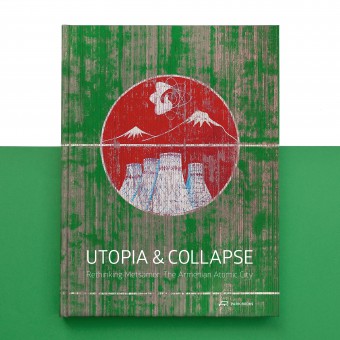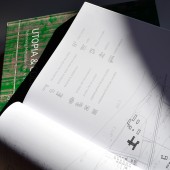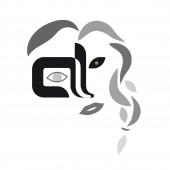Utopia and Collapse Book by Timea Andoka |
Home > Winners > #58491 |
 |
|
||||
| DESIGN DETAILS | |||||
| DESIGN NAME: Utopia and Collapse PRIMARY FUNCTION: Book INSPIRATION: Utopia and Collapse documents the rise and fall of Metsamor, the Armenian atomic city. The book brings together an oral history of the place and a photographic research by Katharina Roters with a number of academic essays. Among the topics discussed are Armenia’s cultural and architectural histories; the typology of Soviet atomograds, or atomic cities; and the phenomenon of modern ruins. Although today the power plant’s workers live in a partly built failed utopia, Metsamor stands as an example of the highly idiosyncratic Armenian variety of Soviet Modernism of the 1960s and 1970s, making this a fascinating story for anyone with an interest in Soviet-era buildings and architecture. UNIQUE PROPERTIES / PROJECT DESCRIPTION: Metsamor, the workers’ town adjacent to the eponymous Armenian nuclear power plant, is a symbol of the Soviet-Armenian dream of technological progress. Over the course of nearly two decades, construction of the town advanced at a rapid pace. However, a devastating earthquake in 1988 and the collapse of the Soviet Union in 1991 led to the closedown of the power plant and, subsequently, all construction in Metsamor came to a halt. By the time the plant reopened in 1995, the town had become disengaged from its original purpose and people were living in a half-built and largely abandoned urban skeleton. OPERATION / FLOW / INTERACTION: What happens when destiny and reality override plans and utopias, and when a dwelling is bereaved its actual purpose? Metsamor’s architecture is a unique example of a distinctively Armenian variety of Soviet Modernism of the 1960s and 1970s. The book, based on the extensive and multidisciplinary Rethinking Metsamor research project, for the first time tells the city’s story in full and reveals what lessons can be learned from it. PROJECT DURATION AND LOCATION: 2007: studying the Metsamor city plans under Sarhat Petrosyan’s supervision on behalf of the Ministry of Urban Development of Armenia. 2008–09: a diploma program takes place for the reassessment of the city’s original plans. 2011–12: Metsamor-trips for international researchers organized by Urbanlab Yerevan. 2014: developing a visual artistic concept that is complementary to the architectural perception: the idea of a more complex approach is born at the workshop led by Katharina Roters, Budapest-Cologne based photo artist, in Yerevan. 2016: ReThink Metsamor Exhibition in Venice, Italy – Independent Landscape, Pavilion of the Republic of Armenia at the 15th Venice Biennale of Architecture. 2018: Utopia and Collapse – Rethinking Metsamor. The Armenian Atomic City – the book published by Park Books, Zurich, Switzerland. FITS BEST INTO CATEGORY: Graphics, Illustration and Visual Communication Design |
PRODUCTION / REALIZATION TECHNOLOGY: The book’s size and the type of paper has been defined by the relationship between the different genres of images and the text. When determining the size, the ratio of the archive documentary photos had to be taken into consideration as they are completely different from the contemporary art photos made for negatives of 6×6 cm. Therefore the grid had to facilitate the harmonzation of both image types with the book as a whole and with each other as well. Two different types of paper are used for the book’s body. The first part contains alternating old and recent photos, ground plans and documentary photos, and some short sections of text – for these pages we have chosen matte paper that is commonly used in the case of similar artistic publications to accentuate and preserve original colours and contrasts. The studies of the second part are printed on recycled paper to make reading agreeable. SPECIFICATIONS / TECHNICAL PROPERTIES: hardback, 220 x 295 mm TAGS: book, architecture, photography, utopia, modernism, contemporary art, minimal design, environmental protection, urban planning RESEARCH ABSTRACT: The goal of the Rethinking Metsamor project is to establish a collaborative research of planners and visual artists on urban history of singular example of Soviet modernism – Metsamor city and Nuclear Power Plant located in the area (both built in the 1970’s) and also the post-Soviet development of urban environment, with a special focus on social obstacles caused by environmental fears and challenges. One of the great results of the successful collaboration is the fact that Armenia was represented by this project at the 15th Venice Biennale of Architecture in 2016. The book’s appearance – with photos, studies and ground plans – in 2018 meant another milestone of a decade in research; furthermore, the book even made it to the shortlist of the German Photo Book Award 2018. CHALLENGE: The biggest challenge was selecting and arranging the photos, and composing their inherent narrative all along. This meant the task of the editor (as of the subject) and the graphic designer (as of the aesthetics), thus the creation of each and every spread was anticipated by long reflection, experimenting, and sometimes extensive discussions. The problem came from the fact that altogether four visual languages came to our disposal: ground plans drawn during the construction period, archive photos, a photographic documentation of the current state of the city, and contemporary artistic photos, reflecting the special ambiance, that had been taken onto 6×6 cm film were available. One of our intentions were to avoid self-repetition and all redundancy. We hoped to tell Metsamor’s story the way Italo Calvino tells stories about Venice in Invisible Cities: telling a different story all the time that is the same story in the end. ADDED DATE: 2017-06-24 11:23:59 TEAM MEMBERS (11) : Concept: Sarhat Petrosyan (ARM), Katharina Roters (GER), Research Team: Sarhat Petrosyan, Armine Shahbazyan,, Nvard Yerkanian, Sofi Haykazuni, Ara Marjanyan (ARM), Graphic design: Timea Andorka (HUN), Title and cover concept: Jozsef Szolnoki (HUN), Cover image: Davit Ayvazyan, Hieroglyph.am, Translations: Sona Hovhannisyan (ARM-ENG), Daniel Nashaat (HUN-ENG), Edith C. Watts (GER-ENG), Dajbukat Borbely Laszlo (HUN-ARM), Linguistic editing: Arto Vaun, Armine Bachachyan (Assistant), Proofreading: Charlotte Eckler (USA), Lithography, printing, and binding: Pauker Holding Kft., Budapest (HUN) and Publisher: Park Books AG, Zurich, Switzerland (SUI) IMAGE CREDITS: all images © Timea Andorka, 2019 PATENTS/COPYRIGHTS: all images © Tímea Andorka, 2019 texts © Jorg H. Gleiter, Ievgeniia Gubkina, Misak Khostikyan, Hamlet Melkumyan, Sarhat Petrosyan, Katharina Roters, and Jozsef Szolnoki, 2018 photographs © Katharina Roters, 2018 archive drawings © ArmProject, 2018 © 2018 urbanlab, Yerevan and Park Books AG, Zurich |
||||
| Visit the following page to learn more: https://andorkatimea.com | |||||
| AWARD DETAILS | |
 |
Utopia and Collapse Book by Timea Andoka is Winner in Print and Published Media Design Category, 2018 - 2019.· Read the interview with designer Timea Andoka for design Utopia and Collapse here.· Press Members: Login or Register to request an exclusive interview with Timea Andoka. · Click here to register inorder to view the profile and other works by Timea Andoka. |
| SOCIAL |
| + Add to Likes / Favorites | Send to My Email | Comment | Testimonials | View Press-Release | Press Kit | Translations |
Did you like Timea Andoka's Print Design?
You will most likely enjoy other award winning print design as well.
Click here to view more Award Winning Print Design.








